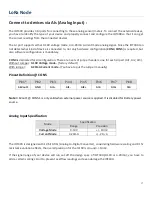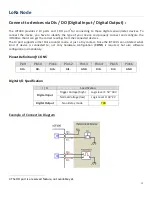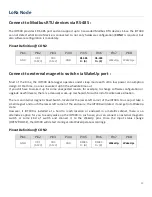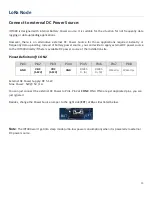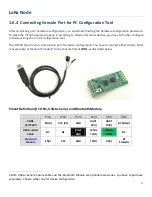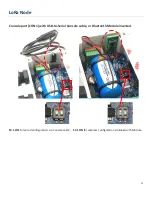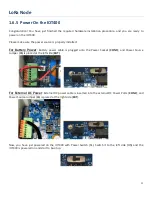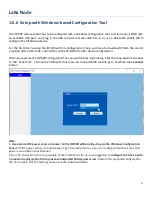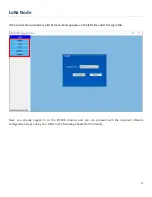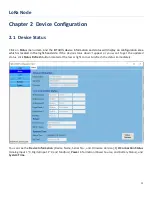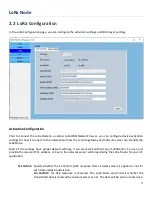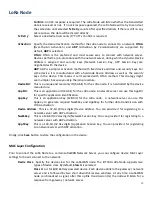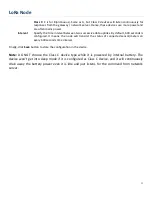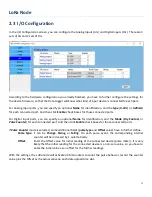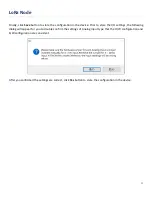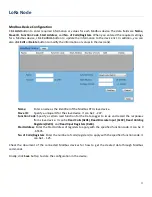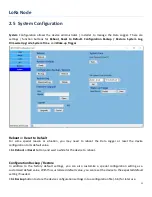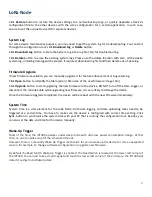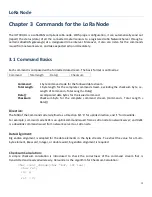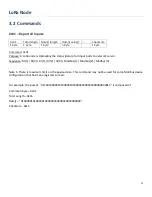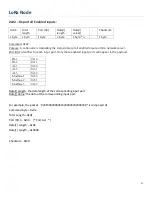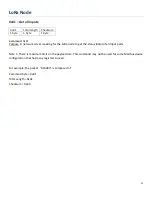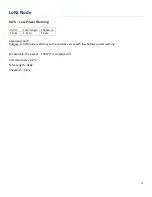
LoRa Node
30
Confirm
: An ACK response is required. The LoRa Node will listen whether the transmitted
data is received or not. If no ack respose appeared, the LoRa Node will retry to send out
the same data until selected
Tx Retry
counts. After specified retrials, if there is still no any
ack response, the data will be discard directly.
Tx Retry
: Select a desired retrial counts (0~7) if Tx Confirm is required.
Activation
: Specify the desired actication method for the LoRa node to connect to a network.
OTAA
(Over-the-Air Activation) and
ABP
(Activation by Personalization) are supported. By
default,
ABP
is selected.
OTAA
: OTAA is the preferred and most secure way to connect with network server.
Devices perform a join-procedure with the network server, during which a dynamic Device
Address is assigned and security keys (Network Session Key, APP Session Key) are
negotiated with the device.
ABP
: ABP is a simpler activation method with fixed device address and security keys. For
some device, it is manufactured with a hardcode Device Address as well as the security
keys in the device. This means it can’t worked with OTAA method. This strategy might
seem simpler, because you skip the join procedure.
DeviceEUI
: This is a unique and read-only ID (64-bit) for the LoRa node. It is hardcoded by the device
manufacture.
AppEUI
:
This is an application ID (64-bit) for the LoRa node. A network server can use this AppEUI
for specific application identification.
AppKey
:
This is an application Key (128-bit) for the LoRa node. A network server can use this
AppKey to generate required NwkSKey and AppSKey for further data transmission with
OTAA activation.
Device Address
: This is a 32-bit (8 Hex digits) Device Address. You can provide it for registering to a
network server with ABP activation.
NwkSKey
: This is a 128-bit (32 Hex digits) Network Session Key. You can provide it for registering to a
network server with ABP activation.
AppSKey
: This is a 128-bit (32 Hex digits) Application Session Key. You can provide it for registering
to a network server with ABP activation.
Finally, click
Save
button to store the configuration in the device.
MAC Layer Configuration
Prior to connect the LoRa Node to a certain LoRaWAN Network Server, you can configure device MAC Layer
settings for how it connect to the network.
Device Class
: Specify the device class for the LoRaWAN node. The IOT400 LoRa Node supports two
types of device class. By default,
Class A
is selected.
Class A
: A is for
A
(ll) Battery powered device. Each device uplink to the gateway / network
server and is followed by two short downlink receive windows. At any time a LoRaWAN
node can broadcast a signal, after this uplink transmission (tx) the node will listen for a
response from gateway / network server.


